We are all fantastical storytellers. You may remember your own yarns as a child, or more likely, those of children, as fanciful, creative chronicles spilled from their imaginations and mouths. And often, they were a key character in the saga. At some point in development, there is a reckoning between fantasy and reality, often involving those joyous childhood participants in legend—Santa Claus, the Tooth Fairy, and the Easter Bunny. Disillusionment and disappointment. Even anger at the deliverer of such bad news. It is all a part of growing up, a step towards maturity.
Our creative, imaginative brains, in an attempt to make sense of any given situation, continue to make up stories throughout our childhood, adolescence, and adulthood. The stories tend to live and twirl inside our own minds. They gather strength and even ‘evidence’ as the story is imagined again and again and again. “I can’t do math.” “Nobody likes me.” “I’m a freak.” “I’m a bad student.” “She’s a bad teacher.” “People are taking advantage of me.” “Someone is out to get me.” What starts out as an inner insecurity often morphs into an outward blaming of others.
Last Sunday, Chris and I traveled to the Minnesota River Valley at Fort Ridgely State Park. The fort was built in 1853 near the Dakota reservations of Upper and Lower Sioux Agencies on what had been Dakota land for thousands and thousands of years. It was used as an outpost, Civil War training facility, and buffer between the Dakotas and the surge of settler–colonists coming into the area. In the middle of the fort stands a granite monument to honor the soldiers and others who fought and were killed in the bloody Dakota War of 1862. On large brass plates on four sides of the monument, a story of the battle is articulated by some person thirty years after the war. Reading the narrative in this day and age shows a stark bias against the Indians with how the storyteller articulated false motives of young Indians who ‘started’ the war and who were ‘out to kill’ the white settlers and soldiers. The modern signage around the excavated ruins of the fort told a different story. The Indians on the reservations were being starved when food promised them from government treaties was not being delivered. The man in charge told them “to eat grass if they are hungry.” Forced from their homeland onto reservations, then starved by the government is a different reality than the story told on the monument.
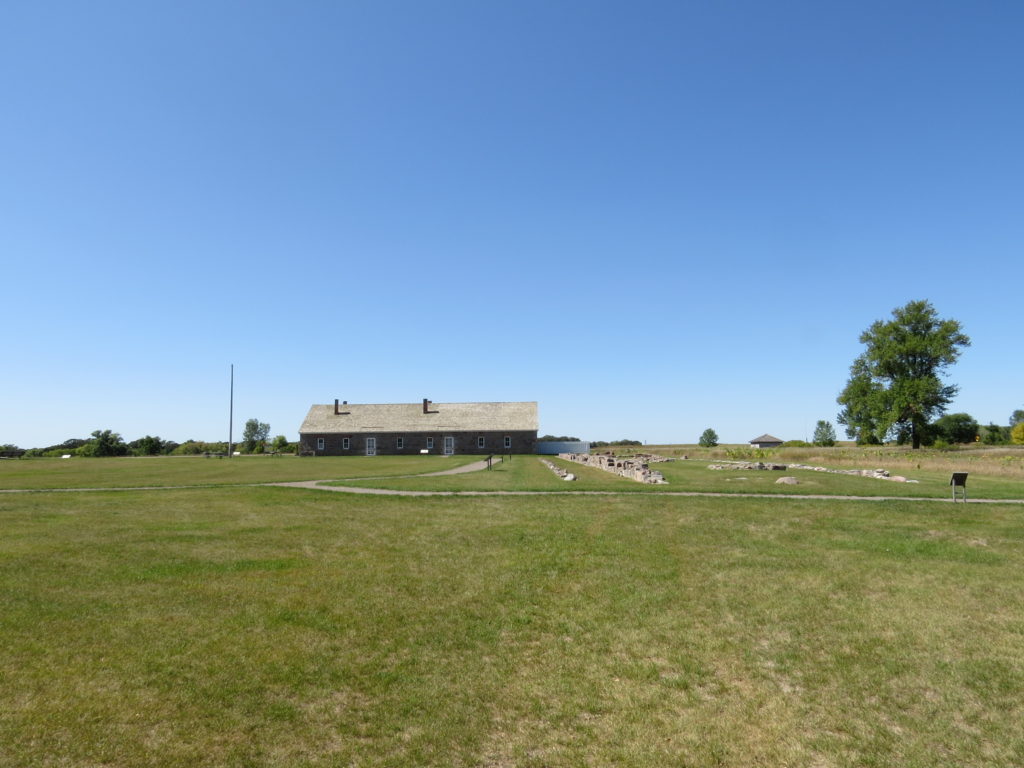
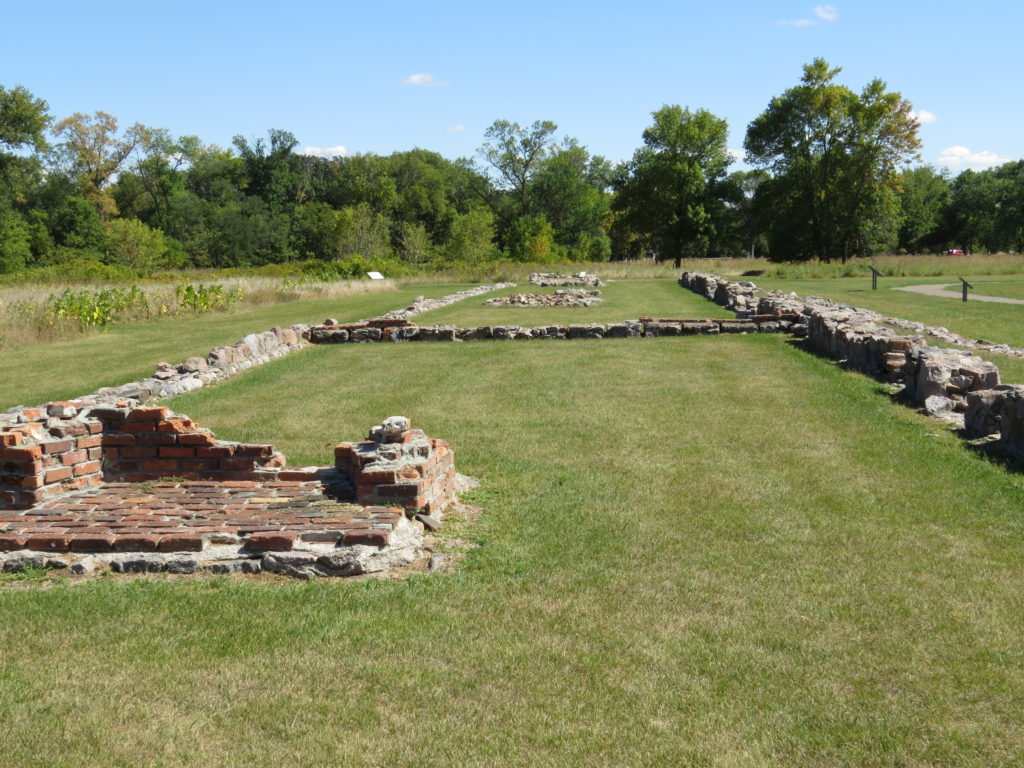
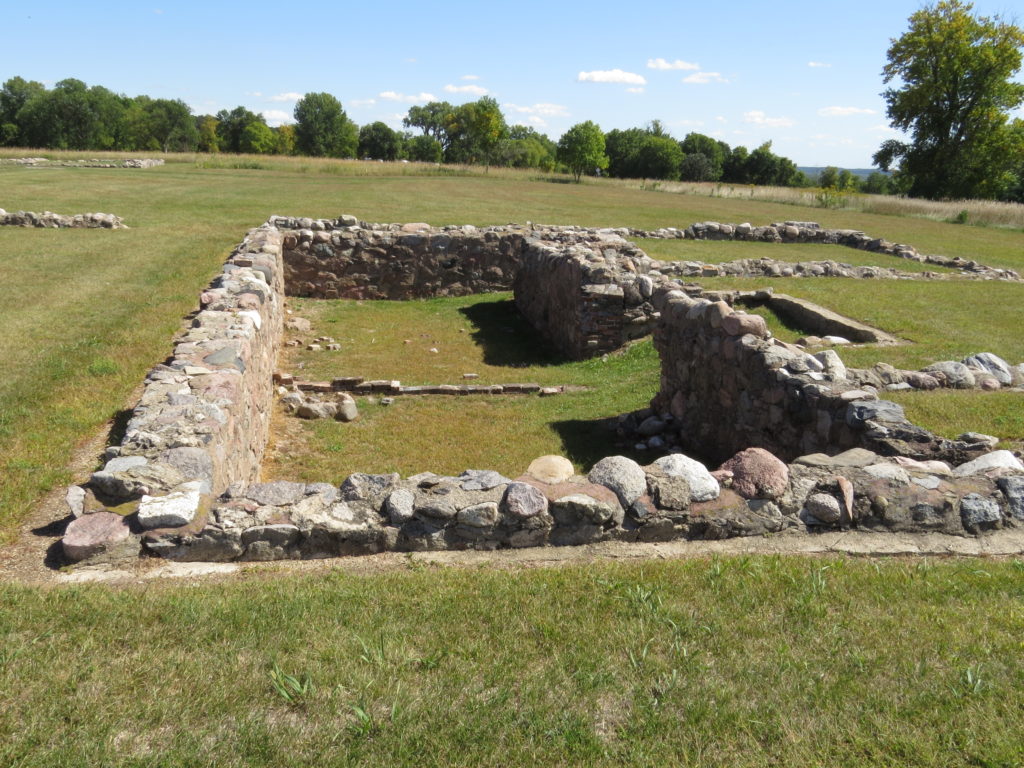
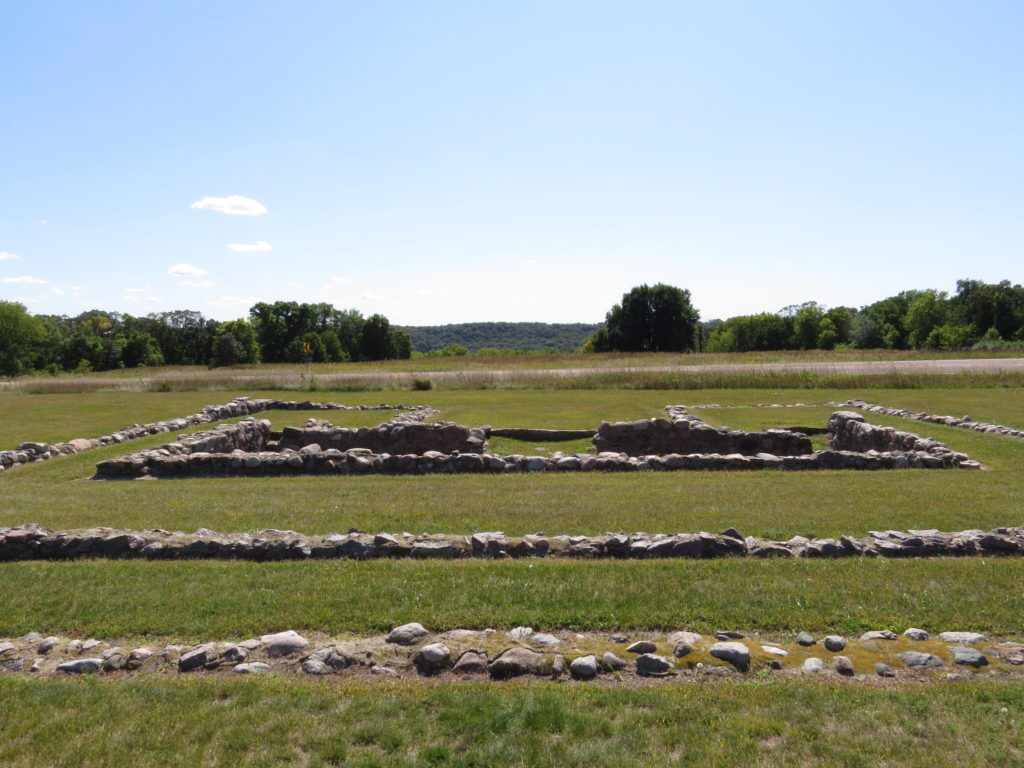
The Minnesota River valley was cut out from glacial till by erosion over thousands of years. The ridge above the River has been returned to prairie.

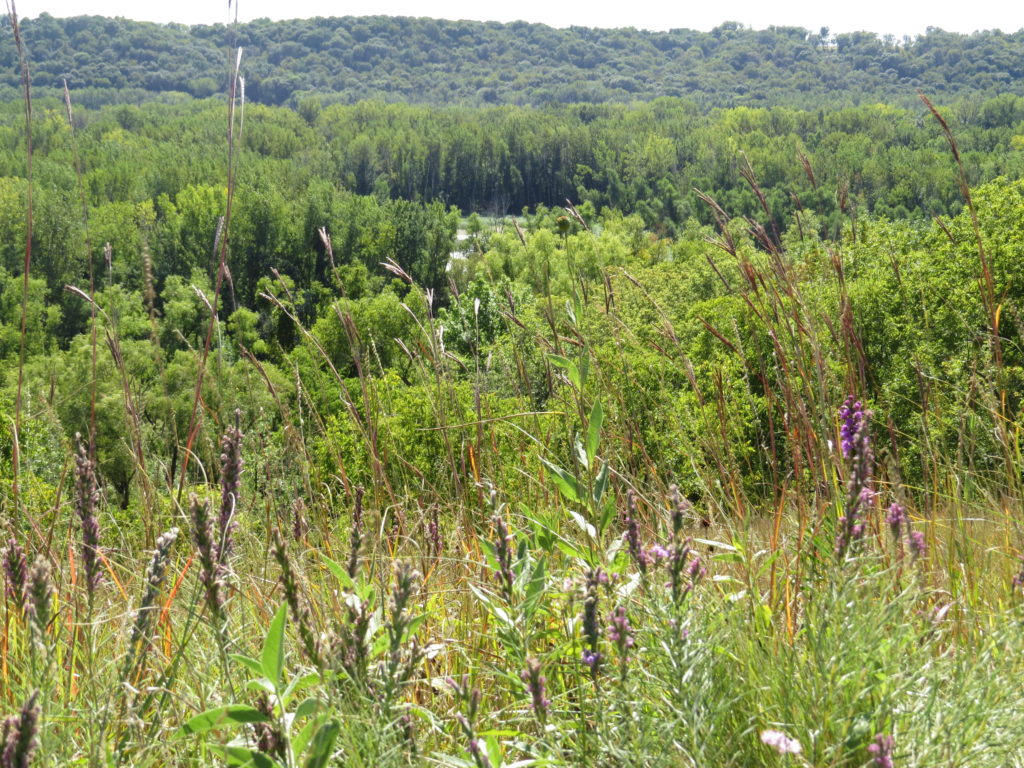
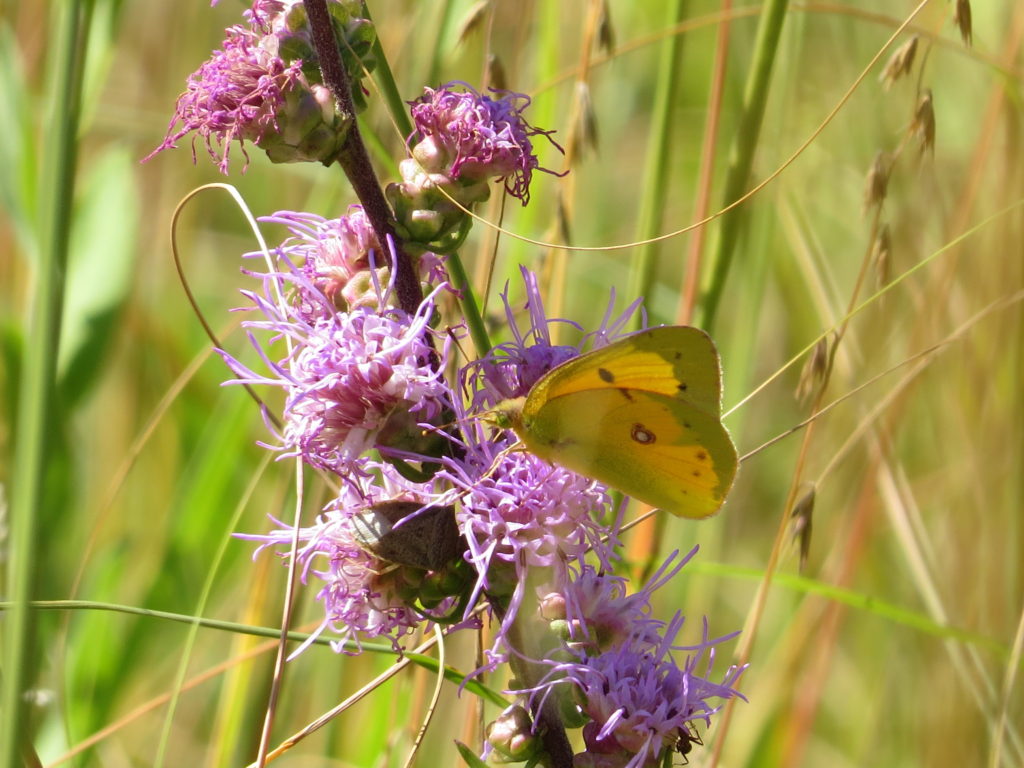
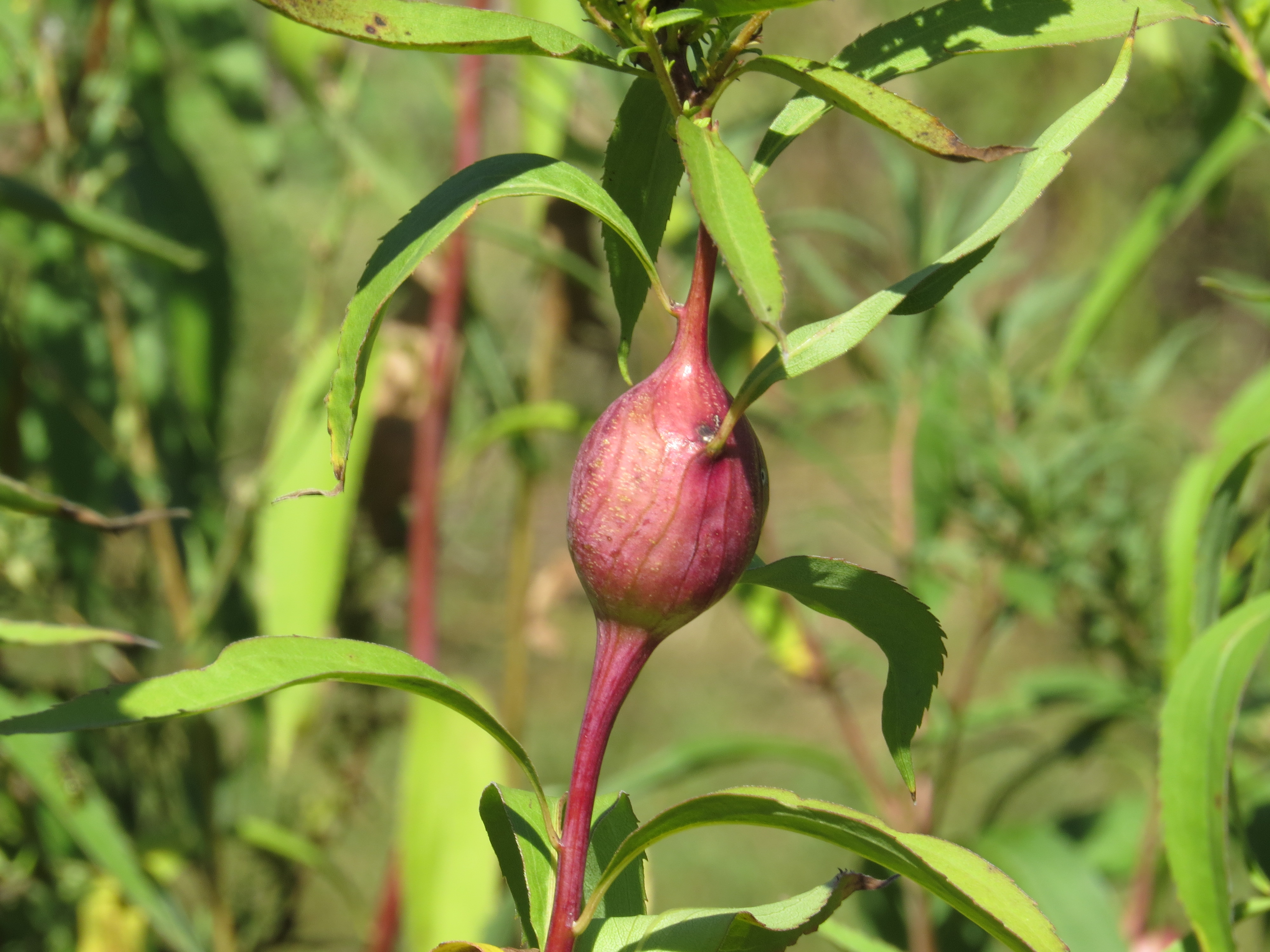
After our fort tour (the museum run by the Minnesota Historical Society was closed), we began our hike behind the CCC-built picnic area. We curved down a hill to the Fairway Trail in a wide strip of prairie that started on top of the ridge and went all the way down to Fort Ridgely Creek. (In 1927, a golf course was built on the park grounds and has since been returned to prairie.) The Ash trees were tipped yellow, Goldenrod and Sunflowers were in their full glory, and crickets chirped an Autumn song.
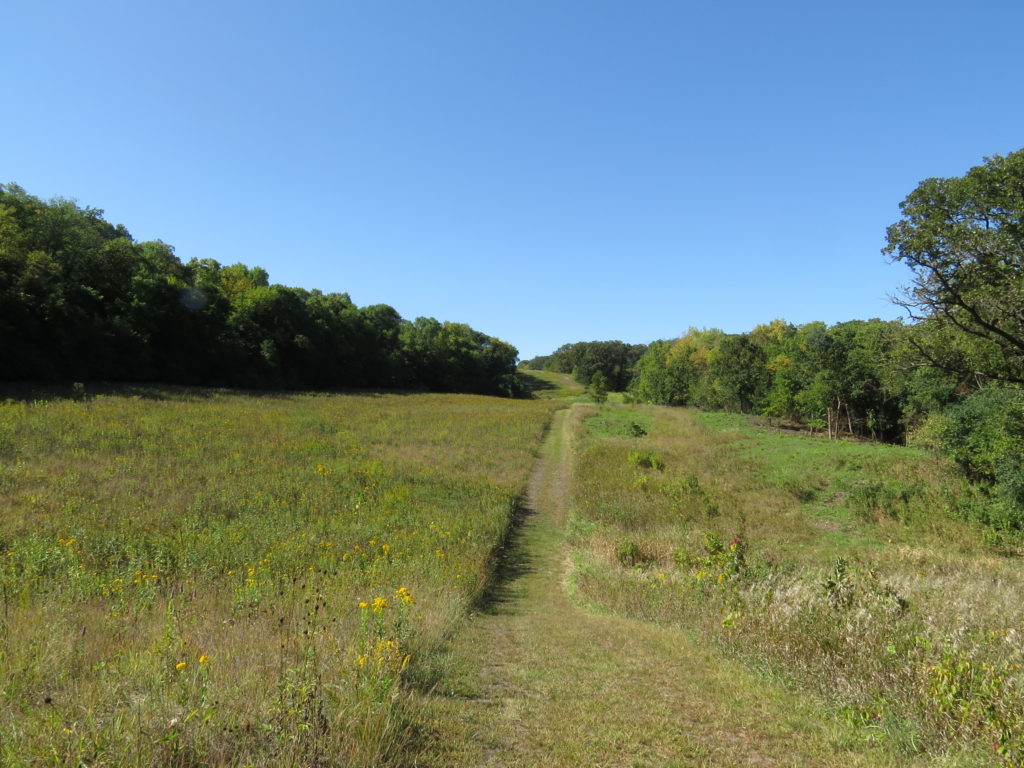

At the top of this hill is a chalet used as a warming house for Winter sledding and snow sports.
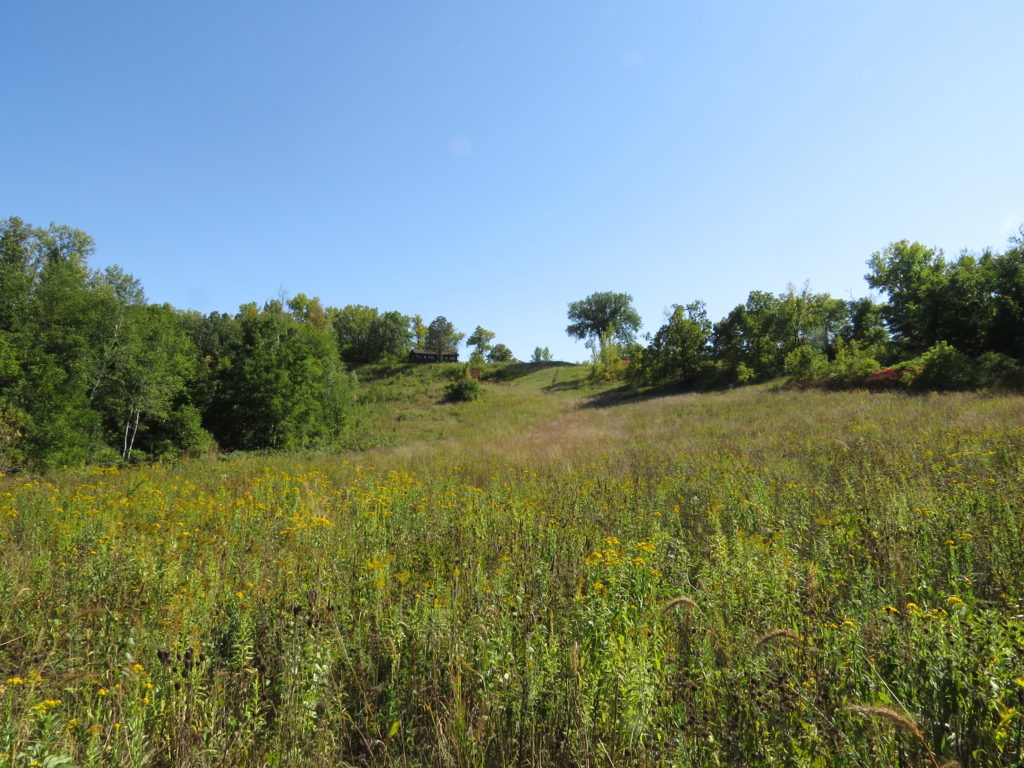
This area of Minnesota has been in drought conditions, and Fort Ridgely Creek and the Minnesota River were very low. We did see minnows swimming in the shallow water of the creek.
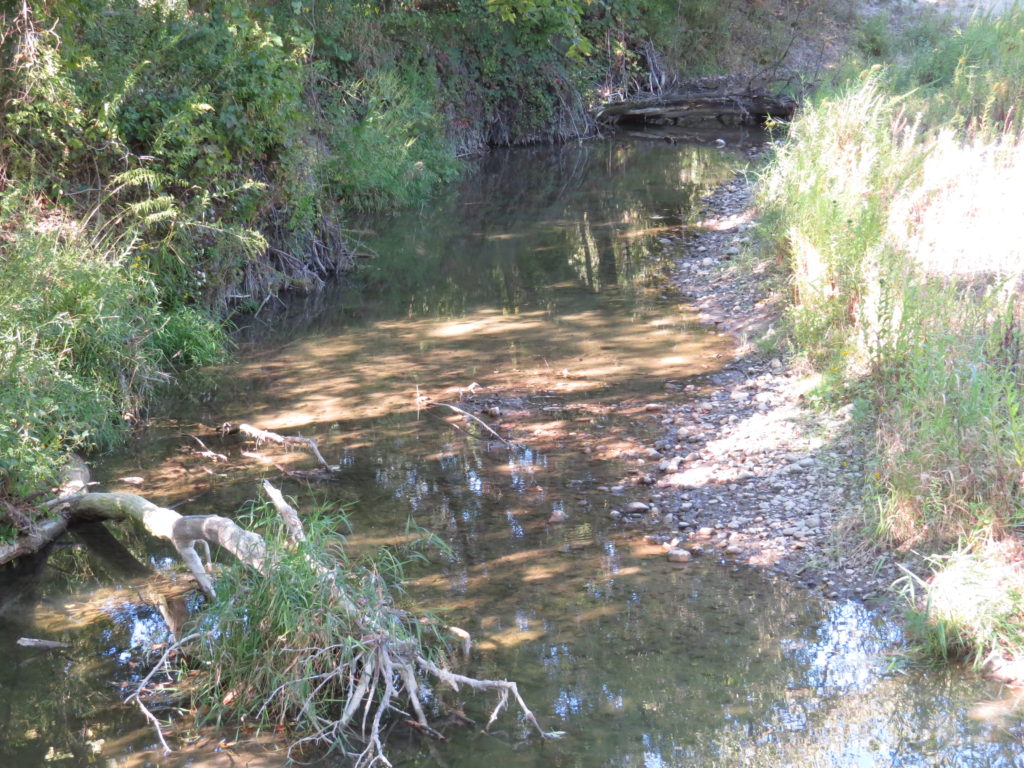

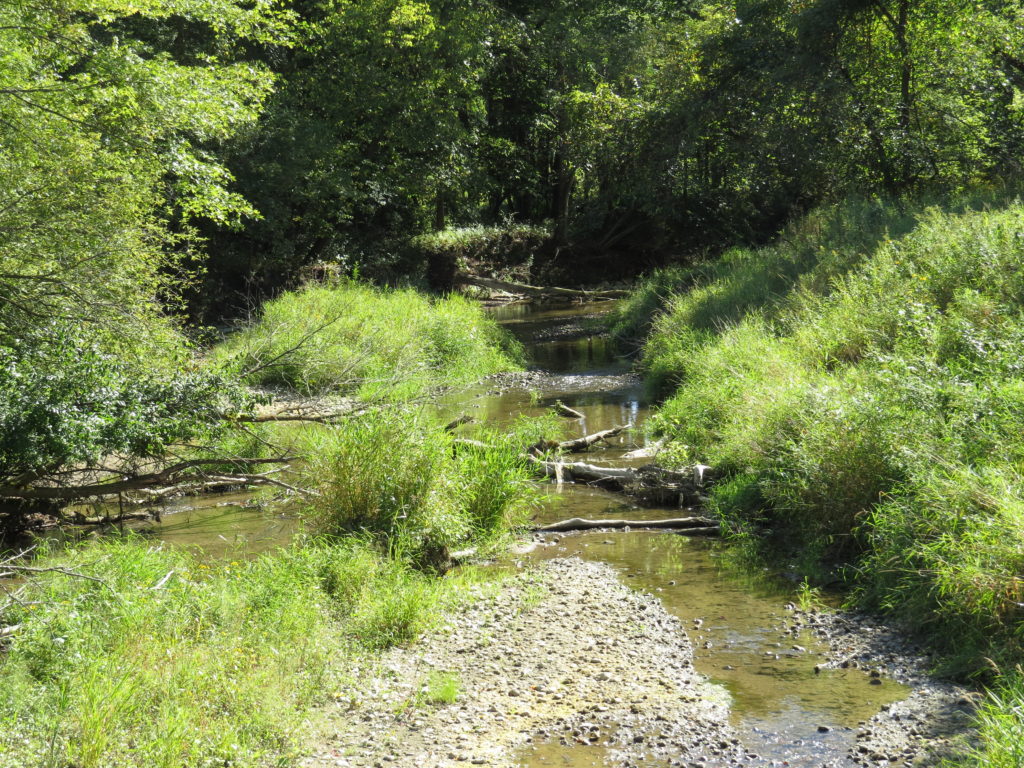
A couple miles north of the main park was a horse camp area in the valley of Fort Ridgely Creek. Huge walls of rock and clay on the east side of the creek created a quiet, protected area.
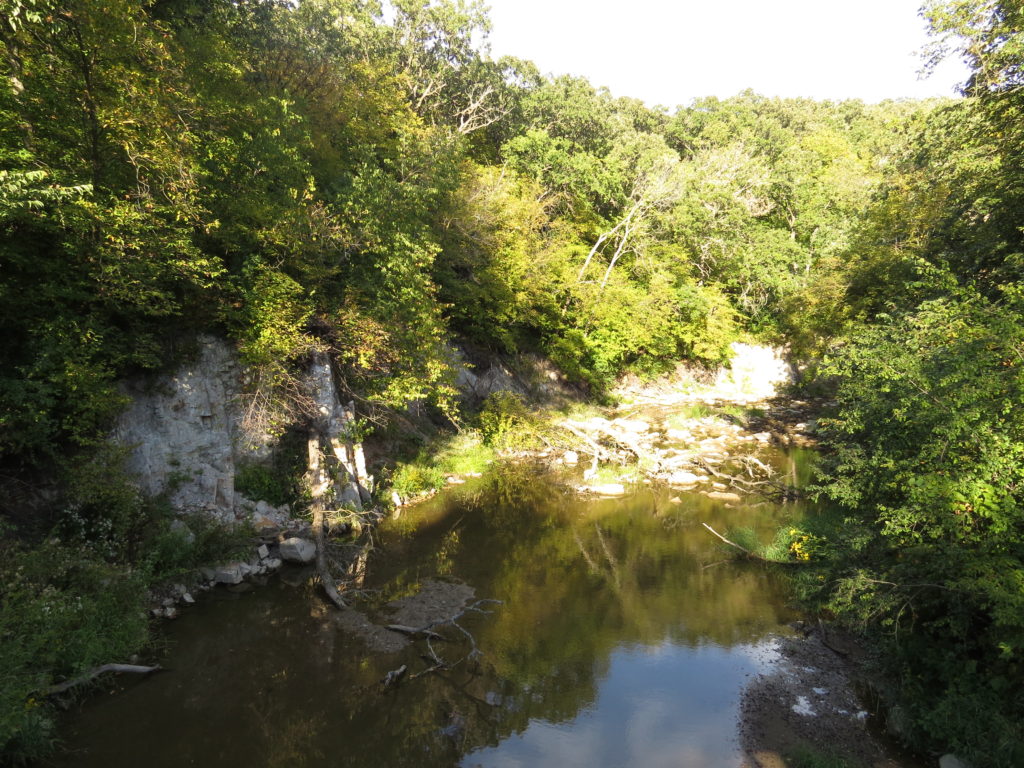
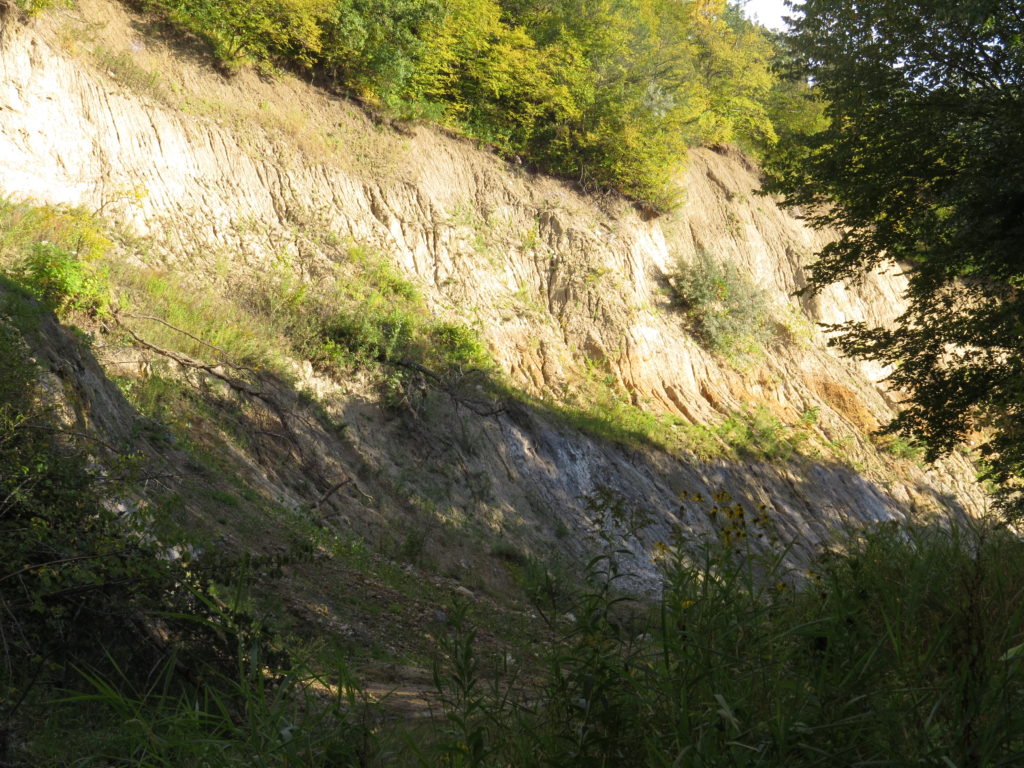
We passed many horseback riders as we hiked, and one proclaimed that it was much easier the way they were doing it than the way we were—but I didn’t know how right he was until we climbed the trail out of the creek bottom to the ridge.
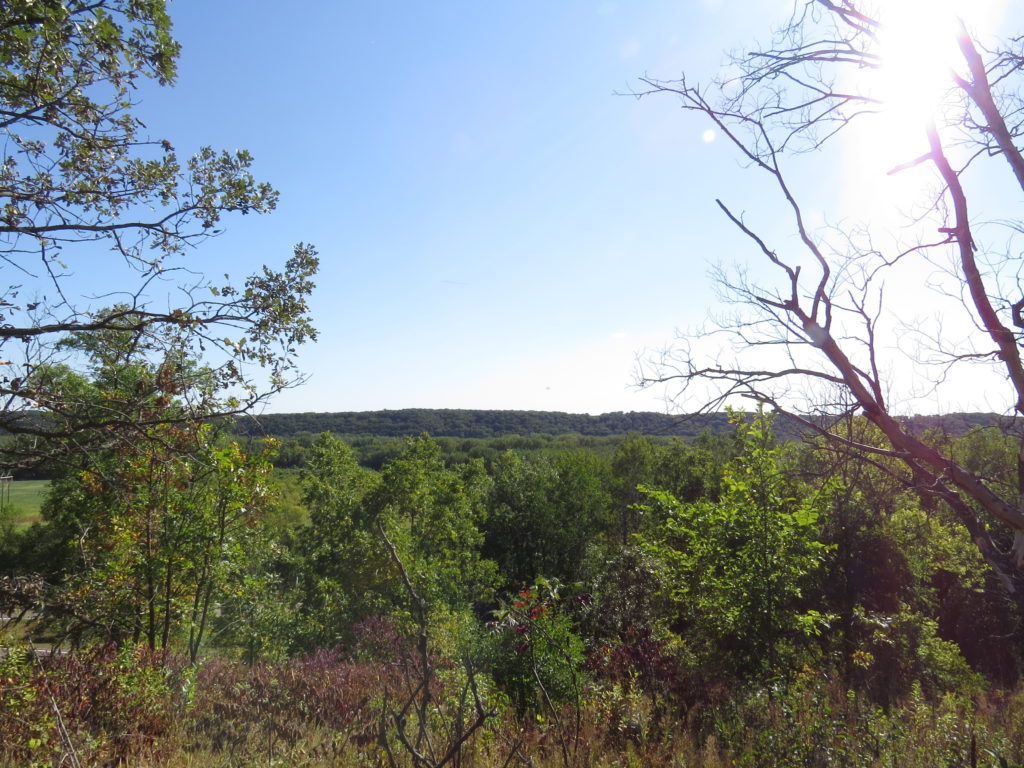
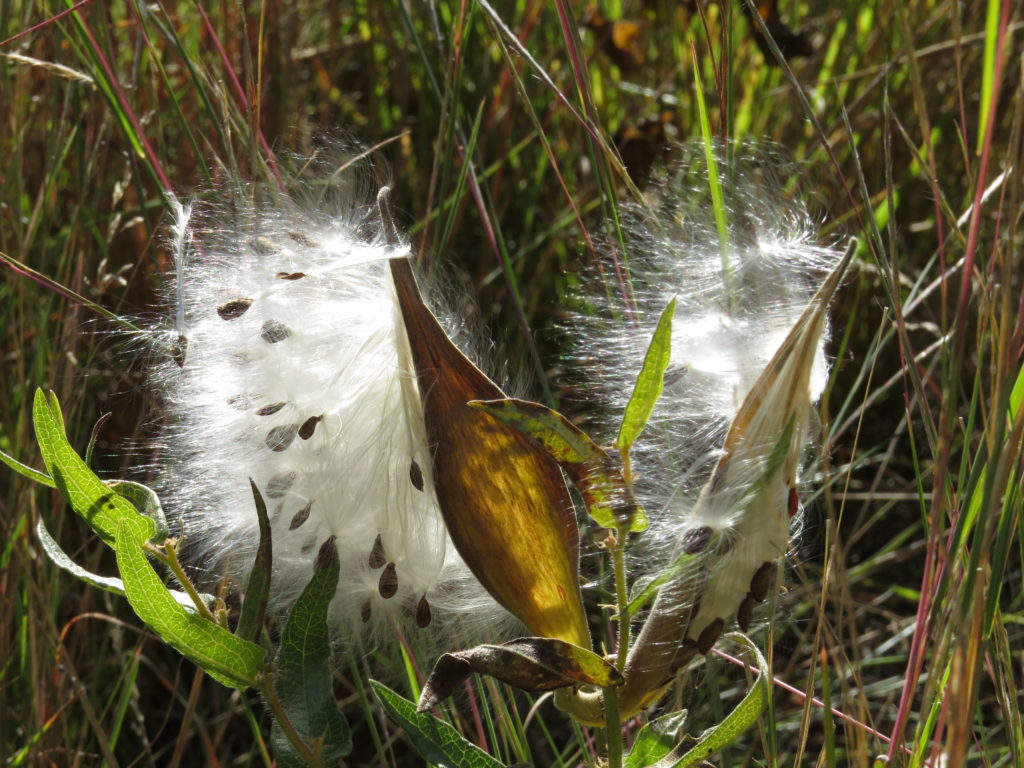
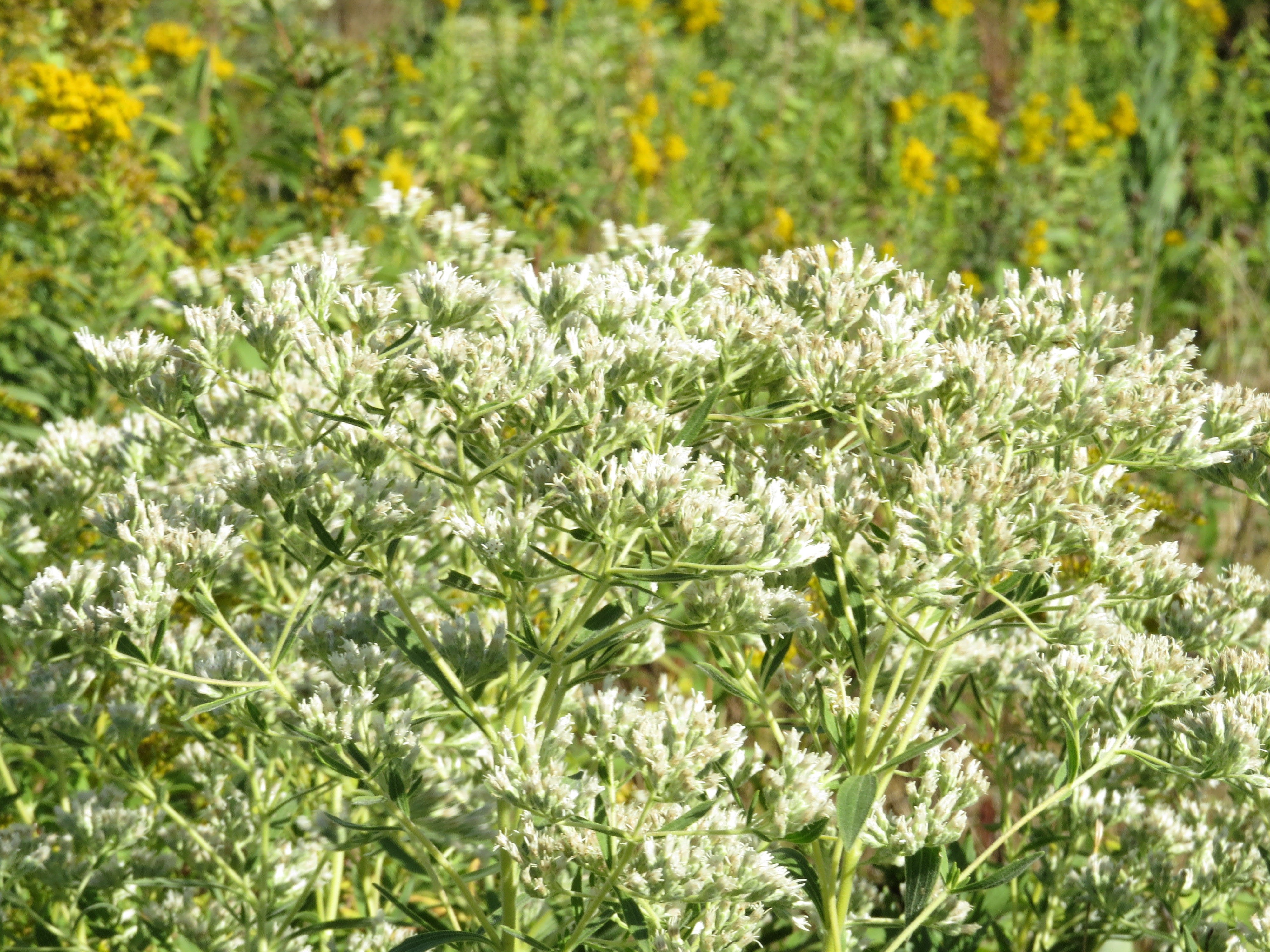
The upper prairie was dominated by Indian Grass, its deep rusty-brown seedheads swayed in the wind and paid homage to the ancestors who had lived and died here.
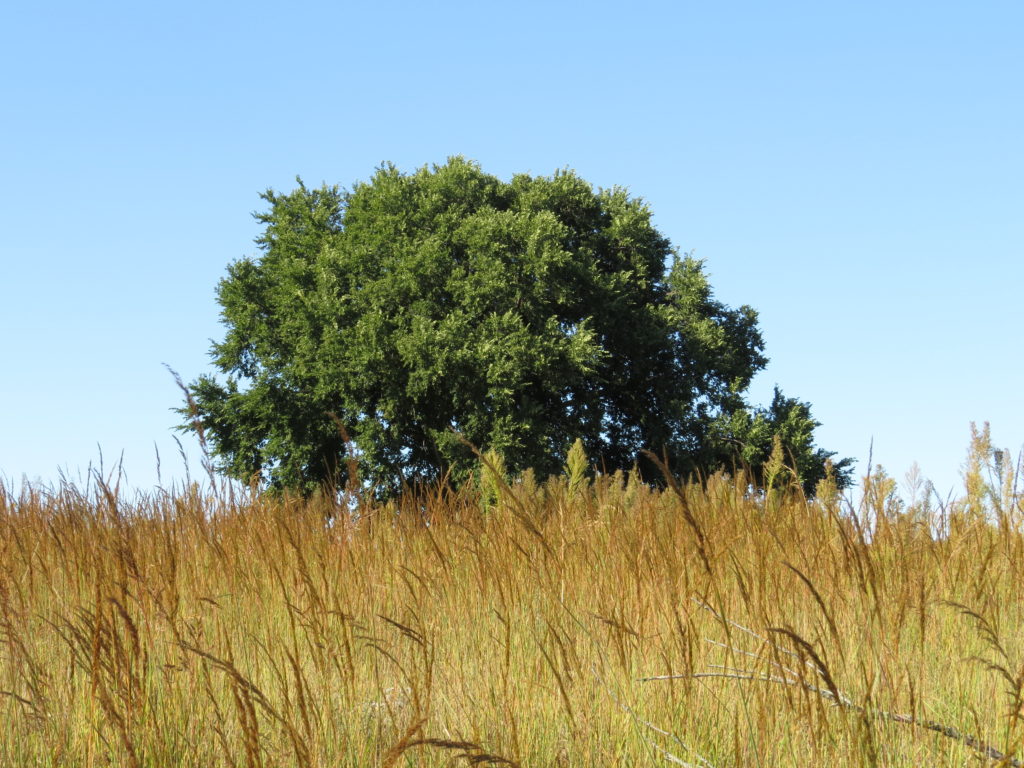
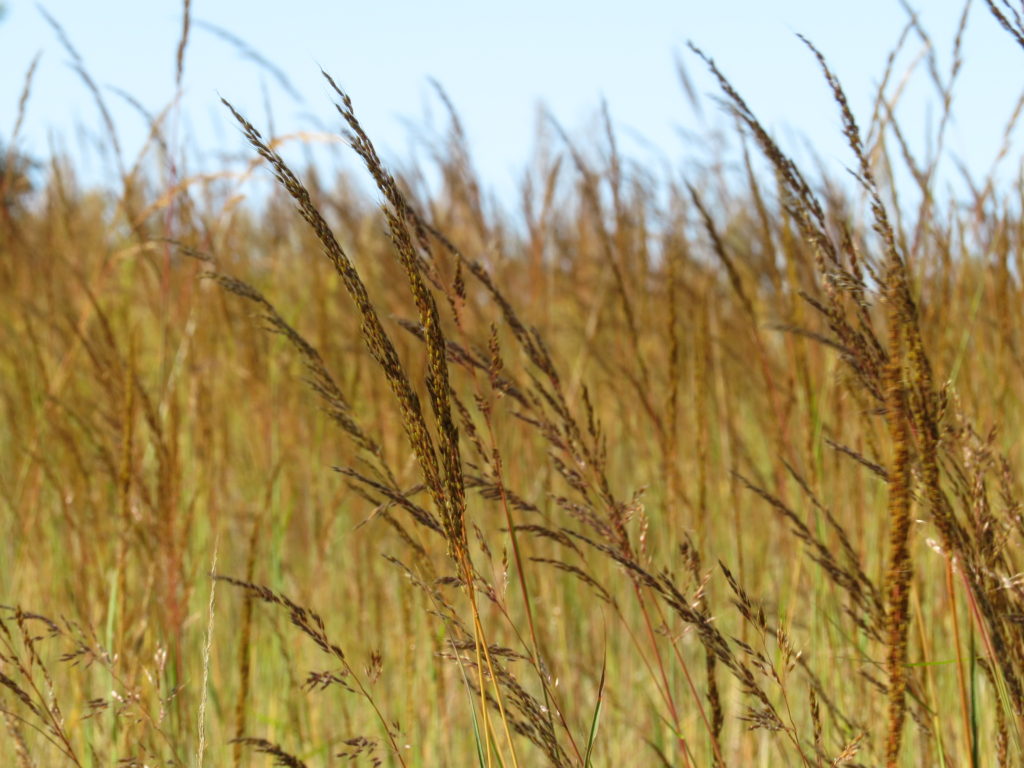
Sunflowers were brilliant, their golden pollen attracting Goldenrod Soldier Beetles, a beneficial insect that doesn’t harm the plants.
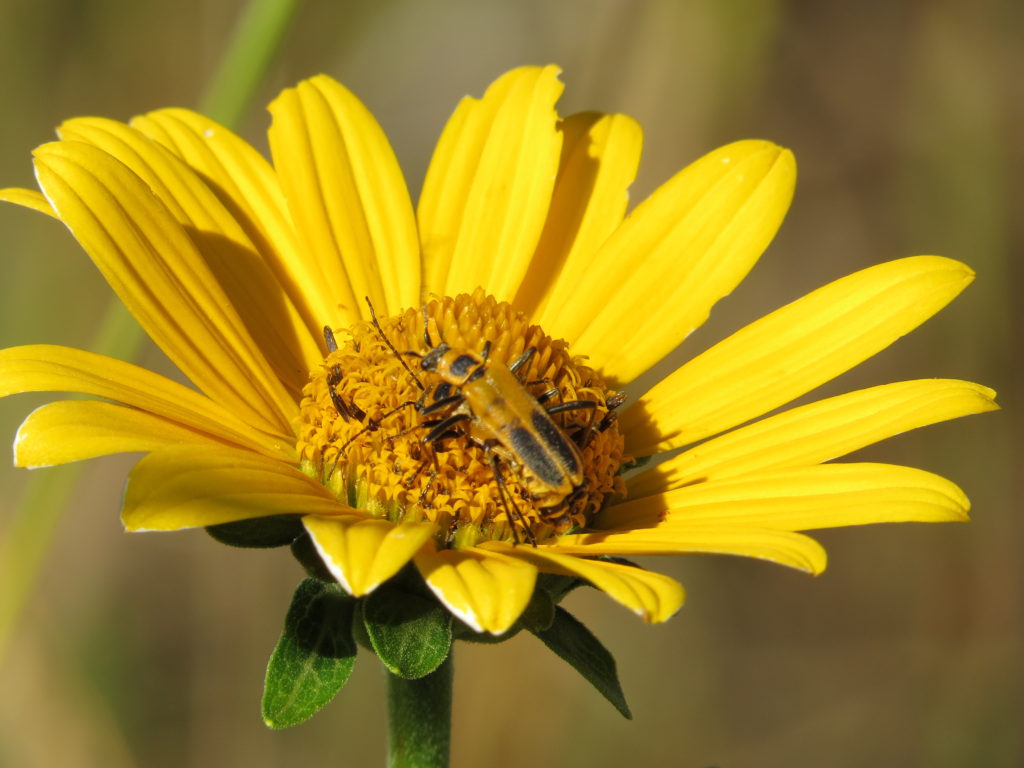
A Cranberrybush Viburnum gave a different vibe from the fall-ish yellow and browns of the prairie.

Sideoats Grama Grass and Common Milkweeds with their full pods of seeds, lined the trail in the Indian Grass prairie.

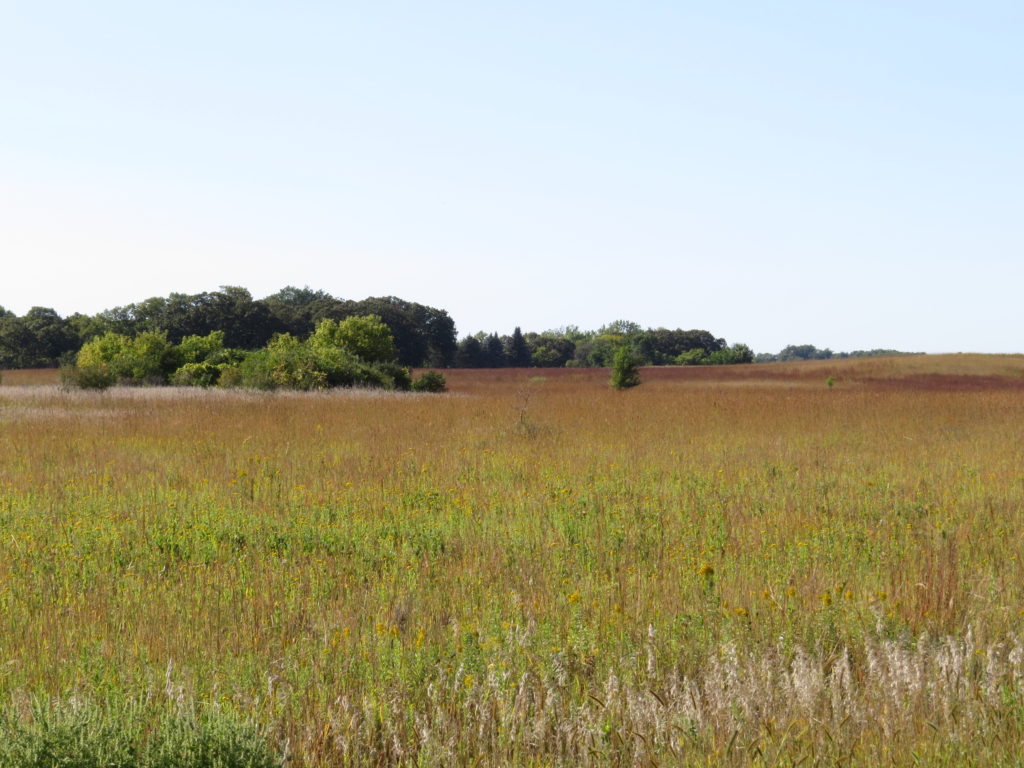
Fort Ridgely closed in 1872, and soon after, settlers unlawfully pillaged the buildings for stone and wood. In 1896, the land was set aside for the US–Dakota War Memorial, and in 1911, with an additional 50 acres, it was designated a state park, the fourth oldest in Minnesota. Now it has 537 acres of history and stories. It is a stark example of how the story changes with time and with who writes it. As I read the story of the US–Dakota War etched into the brass plates on the granite obelisk, I wondered what the Dakota version of the story would be. Our complicated, damning history.
Our stories are often paradoxical—many different versions of the same situation and all of them bearing some, but not all, of the truth. And as I mentioned before, we all have a tendency towards the fantastical, when a story does not correspond with the facts of reality. It really is a human conundrum. We tell ourselves illusory stories in part to have some sort of control over the situation, to put ourselves at the helm when things feel out of control or overwhelming. Perhaps it is ‘practice’ for real life. But too often, we only want our version of the story to be told, fantastical or not. We want our version of other people’s stories to be the truth. I have had many stories live and twirl in my mind in unrealistic fashion, so I know of what I speak. We become entwined with our own story, and the unwinding of it only promises disillusionment, disappointment, grief, and anger. No wonder we are so reluctant to the reckoning. Growing up is not easy, and growing into maturity is even more difficult. How can we be mature and generous with our storytelling? How can we navigate a fair way? How can we pay homage to our own struggles and to the struggles of others? It might take the very thing we started with as children—an open and creative imagination. Can we imagine the homeless person’s story as part of our narrative? Can we include a poor, young mother’s abortion story as part of our own mothering story? Can we envision what a displaced, starving person would do to try to regain health and agency in a repressive culture? We can have our own values and at the same time listen deeply to and walk with a person who is in a situation unlike any we have ever imagined for ourselves. It grows us as a person into a more seasoned version of ourselves. Welcome to the hard-earned, fruit-bearing, browned and aging Autumnal season of Life.